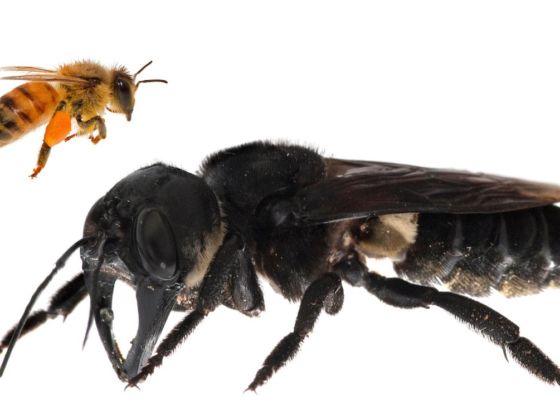The mere sight of this bee would send many into an instant panic, but for the team of North American and Australian experts who rediscovered it last January, it was instant jubilation.
The giant bee, known as Wallace’s giant bee (Megachile pluto), was believed to be lost to science until scientists finally found a single live female on a small Indonesian island called North Moluccas in January 2019. Named after Alfred Russel Wallace, the famous British naturalist who discovered the species in 1859 on the island of Bacan in Indonesia, the bee had not been seen since 1981 when biologist Adam Messer discovered six nests in the same area.
